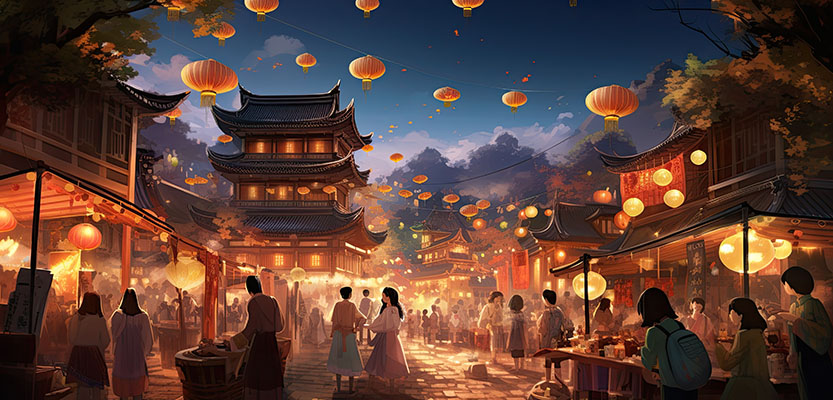
The Mid-Autumn Festival, also known as the Moon Festival or Zhongqiujie (中秋节) in China, is a cherished cultural celebration that falls on the 15th day of the 8th month of the lunar calendar, typically in September or early October. This festival holds deep cultural significance and is a time for families to reunite, express gratitude, and celebrate the beauty of the full moon. Here are some of the traditional customs and practices observed during the Mid-Autumn Festival:
1. Reunion and Family Gathering (团圆):
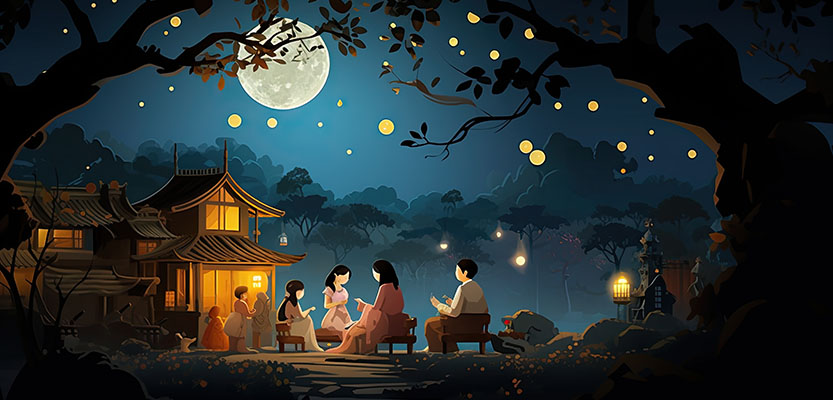
The Mid-Autumn Festival is often referred to as a time of "reunion," and families make extra efforts to come together, no matter how far the distances may be. Family members gather to share a special meal and appreciate each other's company. It's a time to strengthen family bonds and celebrate unity.
2. Moon Appreciation (赏月):
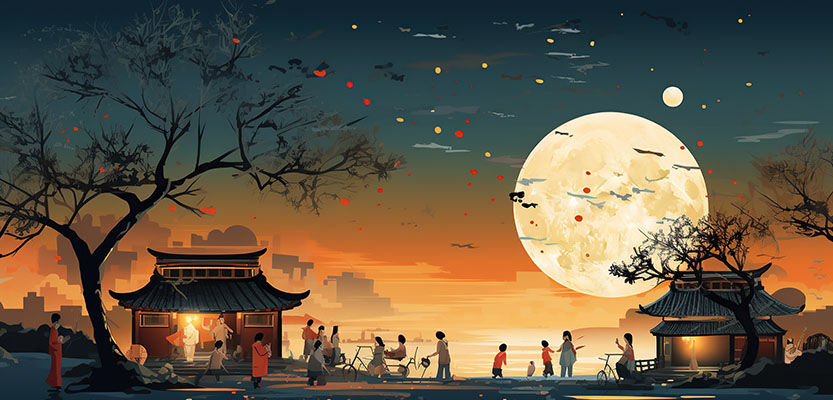
Moon gazing is a central tradition during the Mid-Autumn Festival. Families and friends gather outdoors or by windows to enjoy the sight of the full moon, which is believed to be at its brightest and roundest during this time. Mooncakes, a traditional treat, are often enjoyed during moonlit evenings.
3. Mooncakes and Sharing (月饼与分享):
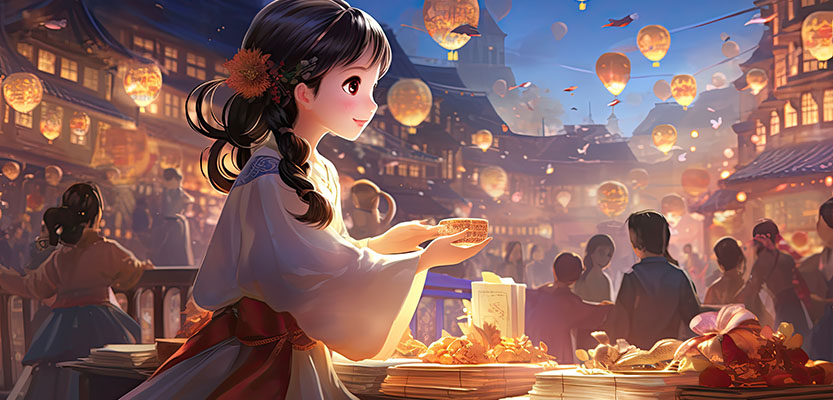
Mooncakes, round pastries with various fillings, are an iconic treat associated with the Mid-Autumn Festival. They symbolize the full moon's completeness and unity. Families exchange mooncakes as gifts, and it's common to present them to relatives, friends, and business associates as tokens of appreciation and goodwill.
4. Lanterns and Festive Decorations (灯笼与节日装饰):
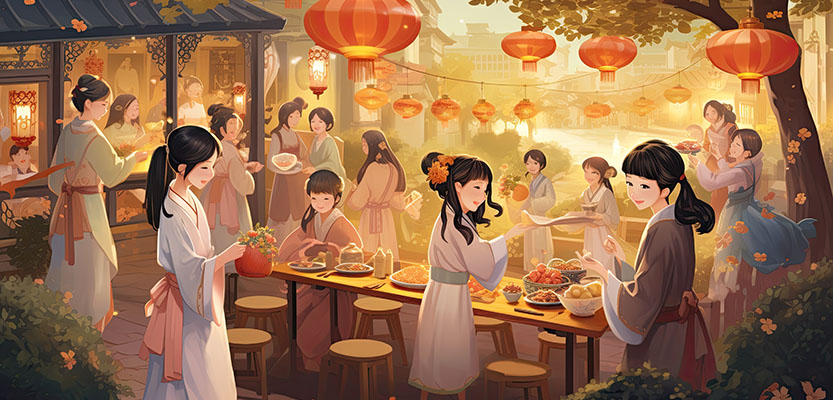
Colorful lanterns, often shaped like animals, flowers, or symbols, adorn homes, streets, and public spaces during the festival. These lanterns add to the festive atmosphere and create a vibrant display of light. Traditional paper-cut decorations and other festive ornaments are also used to embellish homes.
5. Dragon and Lion Dances (舞龙舞狮):
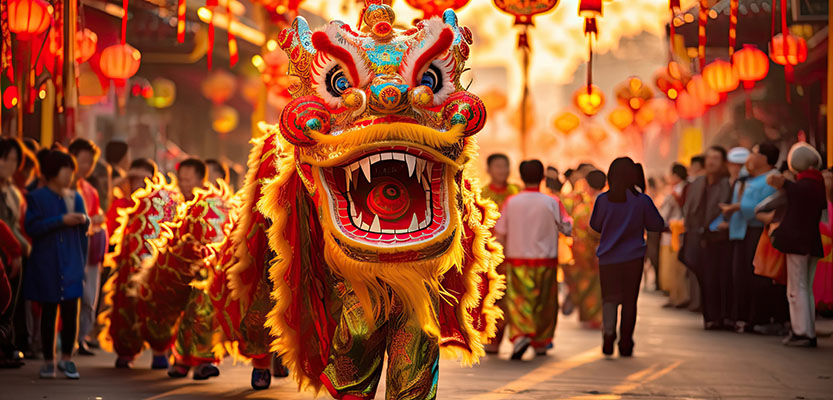
In some regions of China, dragon and lion dances are performed during the Mid-Autumn Festival. These lively and dynamic performances are accompanied by traditional music and drumming. The dances are believed to bring good luck, prosperity, and ward off evil spirits.
6. Taros and Pomelos (芋头与柚子):
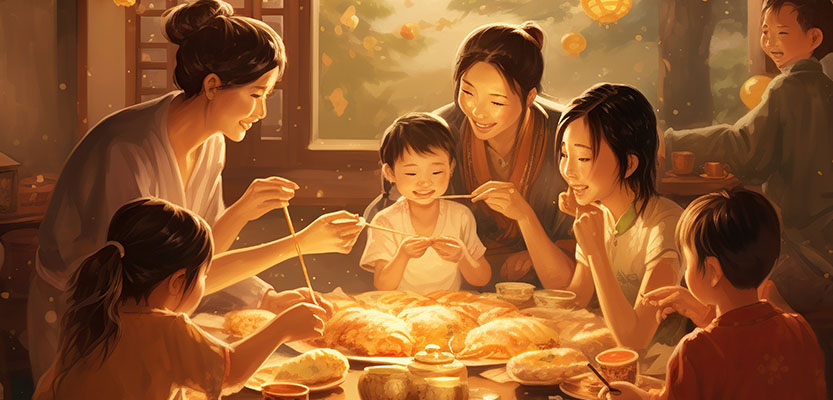
Eating certain foods is an integral part of the Mid-Autumn Festival. Taros (芋头) and pomelos (柚子) are traditional fruits associated with the festival. Eating taros signifies family unity, while pomelos are considered symbols of abundance and good luck.
7. Tea Appreciation (品茶):
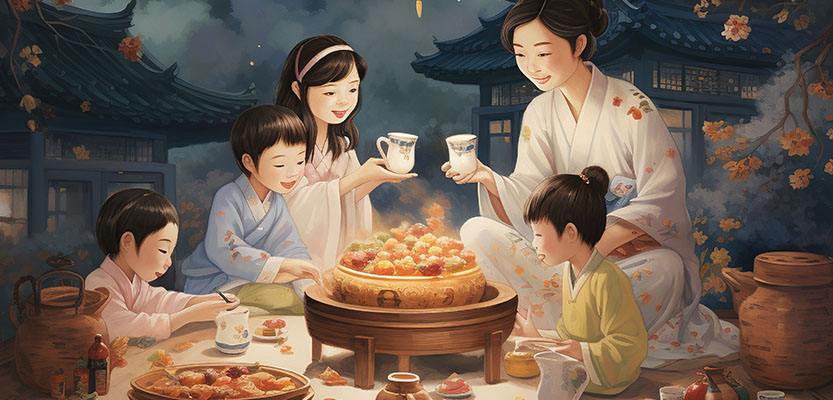
Tea plays an important role in Chinese culture, and the Mid-Autumn Festival is an occasion to appreciate fine tea. Tea ceremonies and tea tastings are often held during the festival, allowing individuals to savor the flavors and aromas of different tea varieties.
8. Cultural Performances and Activities (文化表演与活动):
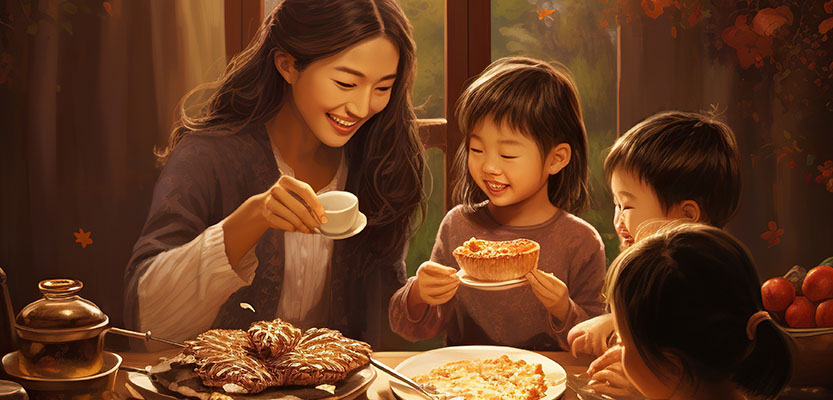
Many communities organize cultural performances, traditional arts and crafts activities, and storytelling sessions to educate younger generations about the significance of the Mid-Autumn Festival. These activities contribute to preserving and passing down cultural heritage.
9. Giving Thanks (感恩):
The Mid-Autumn Festival is a time of gratitude and reflection. People give thanks for the harvest, their blessings, and the opportunity to be with loved ones. The festival promotes a sense of appreciation and mindfulness.
The Mid-Autumn Festival is a time of joy, togetherness, and cultural enrichment. It embodies the Chinese values of family, unity, and gratitude, making it a cherished and celebrated occasion throughout China and among Chinese communities worldwide.








